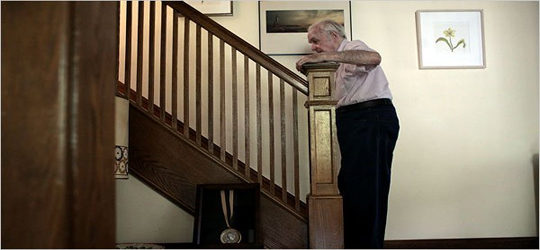Many caregivers are supporting and caring for loved ones in their own homes, while others are caring for loved ones who are living in their own homes. Typically, most homes are not designed for caregiving.
Take some time to look closely at each room where your loved one or friend may spend time, paying special attention to the bedroom, bathroom, and hallways. With advice from your loved one or friend’s healthcare team, you may need to make some changes for the comfort and safety of all who live there, keeping these points in mind:
Safety
- Are there handrails to help move from one room to another?
- Is there a raised toilet seat for easier sitting?
- Are there grab bars near the toilet and bathtub for safety in standing and lowering?
- Are there nonskid mats on the bathroom floor and in the bathtub to prevent slipping and falling?
- Are there nightlights for safety in moving around at night?
- Are there working smoke alarms and fire extinguishers throughout the home? Do you periodically check to ensure they are operating properly?
- Are emergency numbers – Fire, Hospital, 911 – and contact numbers by the phone or a convenient location?
If your loved one or friend is disabled, you will want to ensure that he or she:
- Uses a cane or walker, if needed.
- Has a clear path through each room, that there are no rugs or raised room dividers to trip over, and no slippery floors. You can carpet the bathroom with all weather carpeting to help prevent falls. This can be pulled up in sections, if it is wet.
- Is secure in his or her wheelchair. If your loved one or friend is weak, a tray that attaches to the wheelchair can prevent falls and provides a place for your loved one or friend’s drinks, magazines, etc.
- Cannot fall out of bed. If the bed does not have guardrails, you can place the wheelchair or other guards next to the bed, and position your loved one or friend in the middle of the bed so that she or he can turn over without fear of falling.
Equipment
Does your loved one or friend need:
- A hospital bed or other special type of bed?
- Walker and/or cane?
- Wheelchair?
- Bedside commode?
- Lift?
- Oxygen?
Mobility
- Can a wheelchair fit through the doorways?
- Is a ramp needed on stairs?
- Is it easy to walk or move from room to room without running into furniture?
- Is there a nightlight for safety in moving around at night?
Communication
Quick, easy, and readily available ways to communicate with others are a must for you and your loved one or friend, especially in an emergency. You may borrow or purchase:
- A cordless speaker phone with speed dial memory so that you can simply hit one button in an emergency and get help without compromising the safety of your loved one or friend. Also, phones with a large digital display for easy reading, and ring and voice enhancer, are helpful for people who have hearing problems.
- A cellular phone, if you and your family member or friend travel or spend time outside the home.
- A medical or home alert system which will summon help with the push of a button, if you occasionally leave your loved one or friend alone.
- An intercom or baby monitor so you may listen to your loved one or friend when you are in another room.
- A bell that your loved one can ring to ask for help without yelling.
National Hospice and Palliative Care Organization



